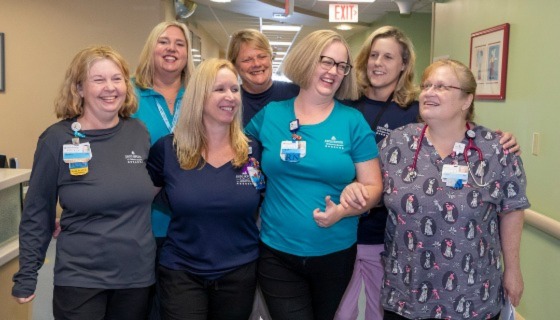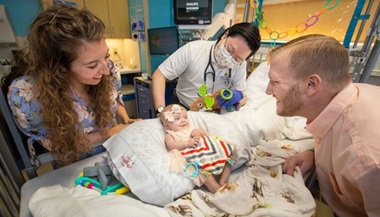Hereditary Multiple Exostosis (Diahyseal Aclasia)
What You Need to Know
- Hereditary multiple exostosis usually presents in children when they are around 3 or 4 years old.
- A physical exam and X-rays are done to diagnose hereditary multiple exostosis.
- Treatment for hereditary multiple exostosis may include surgery to remove the bony growths if they are causing the child pain or discomfort.
What is hereditary multiple exostosis?
Hereditary multiple exostosis, also known as diaphyseal aclasis, is a genetic condition often passed down to a child by one parent, but it can also be caused by a genetic mutation, meaning it can occur on its own by a change. The gene for hereditary multiple exostosis produces a protein that affects bone growth and development, causing bony growths called exostoses.
The exostoses are categorized in two ways: sessile or pedunculated. Sessile exostoses are permanently attached or fixed and broad, while pedunculated exostoses are connected by a narrow stem.
Hereditary multiple exostosis is usually diagnosed around age 3 or 4, when the first exostosis occurs. The exostoses become more prominent as the child grows but stop developing once a child hits maturity.
What are the symptoms of hereditary multiple exostosis?
The growths may cause soreness when they arise under tendons or areas that get bumped easily.
Other problems that can occur due to hereditary multiple exostosis include:
- Pressure on the tendons, nerves and vessels
- Angular deformities in the arms and legs due to the growths
- Limb lengthen differences, if one limb is more involved with the growths than the other
- Growths can also become malignant (cancerous) in a small percentage of patients, roughly 5 percent
Hereditary Multiple Exostosis Diagnosis
A physical exam will be done first to help determine the areas of growth and number of bones involved. X-rays will then be taken of any area where there is discomfort. A CT scan may be used to further assess the bony growths, and an MRI scan may be ordered to rule out any intraspinal growths.
Hereditary Multiple Exostosis Treatment
The treatment for hereditary multiple exostosis is surgical removal of any growths that are causing pain or discomfort, or disrupting the child’s movement.
Hemiepiphysiodesis, a surgical procedure affecting the growth plates, may be done in the lower extremities and wrist to correct any misalignment of the bones during future growth.





